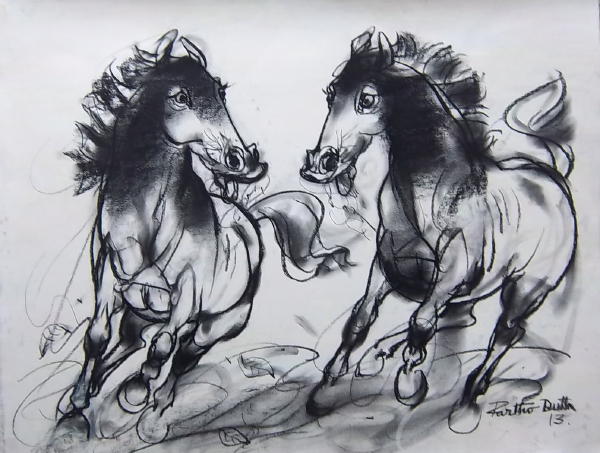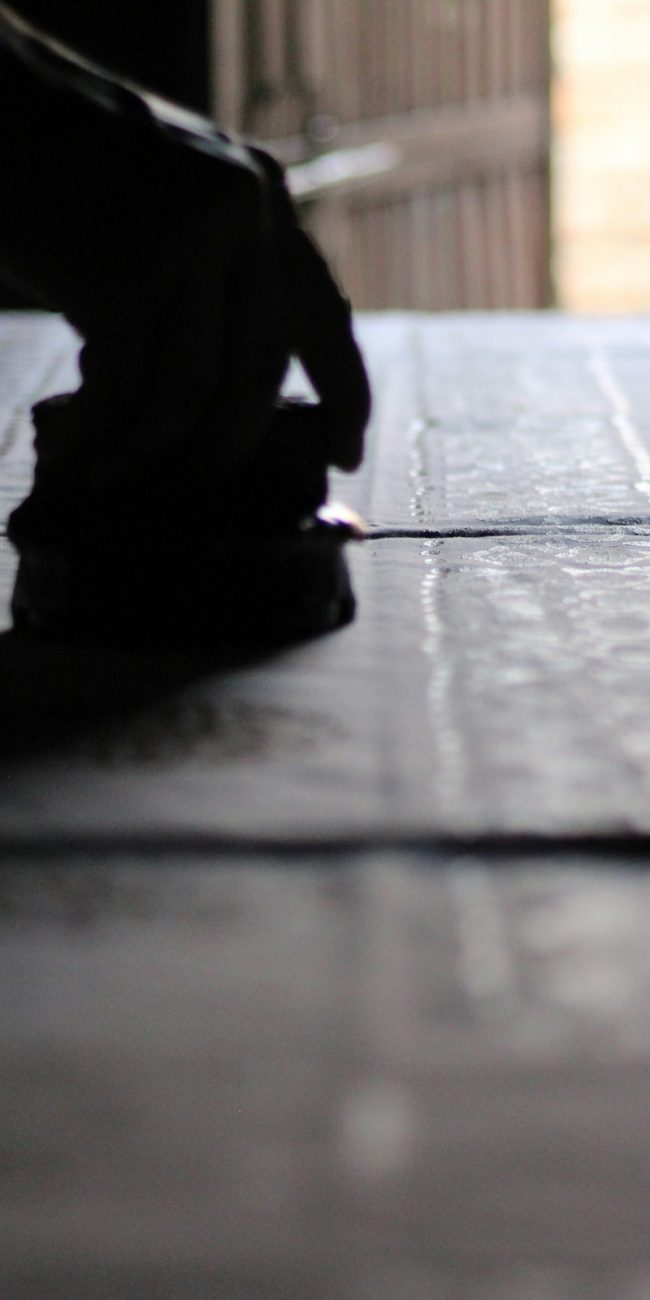
Corporate Art: How Businesses Use Art to Define Brand Identity
In today’s competitive market, businesses constantly seek unique ways to stand out. While logos, websites, and ad campaigns are essential, there’s one powerful tool many brands are now using to create lasting impressions—Corporate Art. Yes, art is no longer just for galleries; it’s shaping boardrooms, lobbies, and workspaces. But more importantly, it’s shaping brand identity.
In this blog, we’ll explore how companies use corporate art to define brand identity, enhance workplace culture, and connect emotionally with clients and employees.
What is Corporate Art?

(Autumn | Aditi Chakraborty | 16″ x 14″ | Oil on canvas)

(After Shower | Aditi Chakraborty | 16″ x 14″ | Oil on canvas)
Corporate art refers to artworks commissioned, purchased, or curated by businesses to display in their offices, buildings, or digital presence. This includes paintings, sculptures, digital installations, murals, and even immersive art experiences. But corporate art is not just about decorating the walls; it’s a strategic branding move.
Why Brand Identity Matters in a Business?
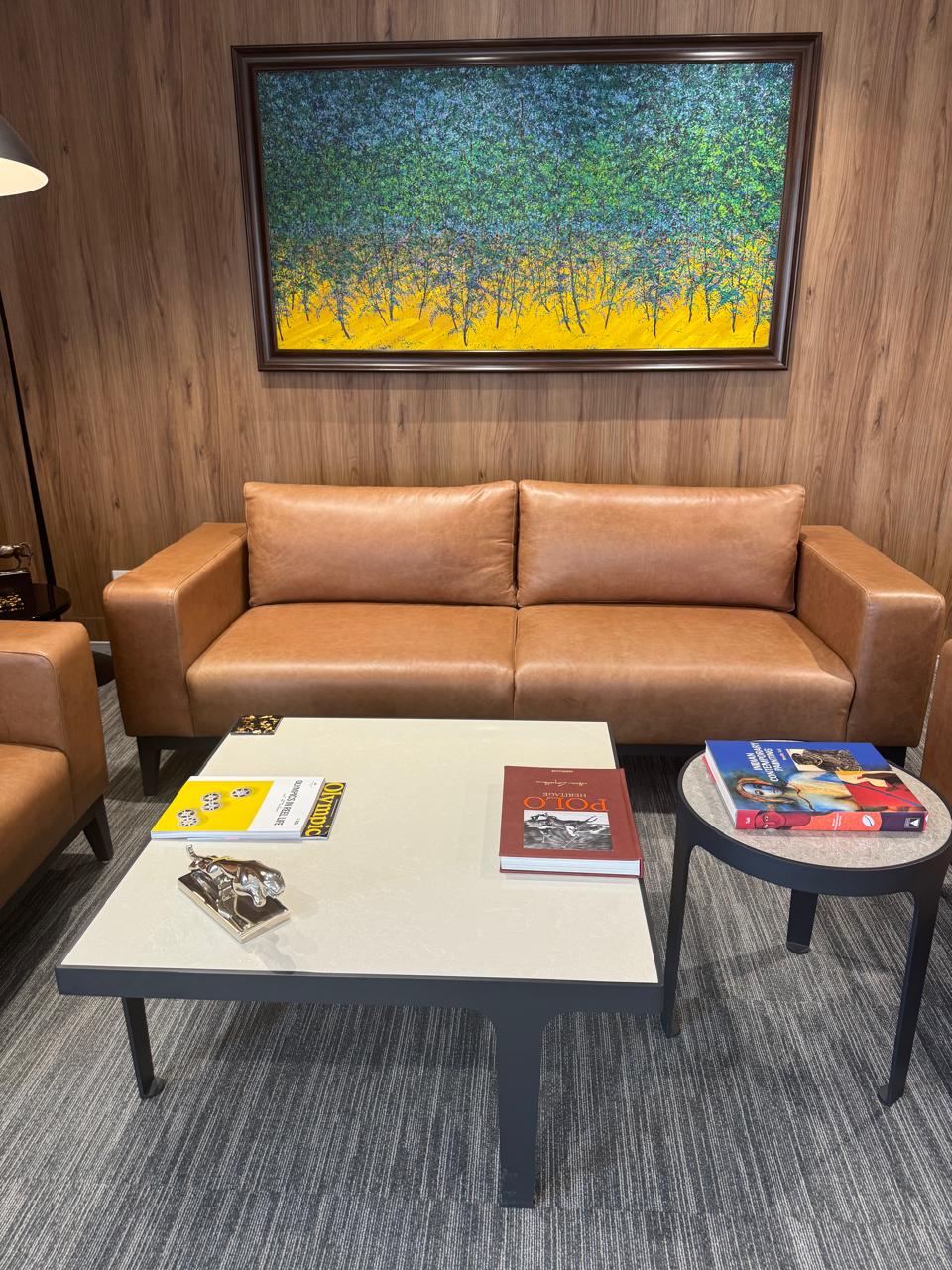
Your brand identity is how people perceive your company. It’s your visual style, tone, values, and mission all rolled into one. A strong brand identity builds trust, boosts employee morale, and helps attract the right customers.
When done right, corporate artwork enhances brand storytelling by visually expressing a company’s ethos and culture. It becomes a creative language that people remember.
How Art Strengthens Brand Identity?

(Samir Mohanty | 30″ x 30″ | Dried Preserved Tree Twigs, Watercolor Metal Rod Rice Paper)
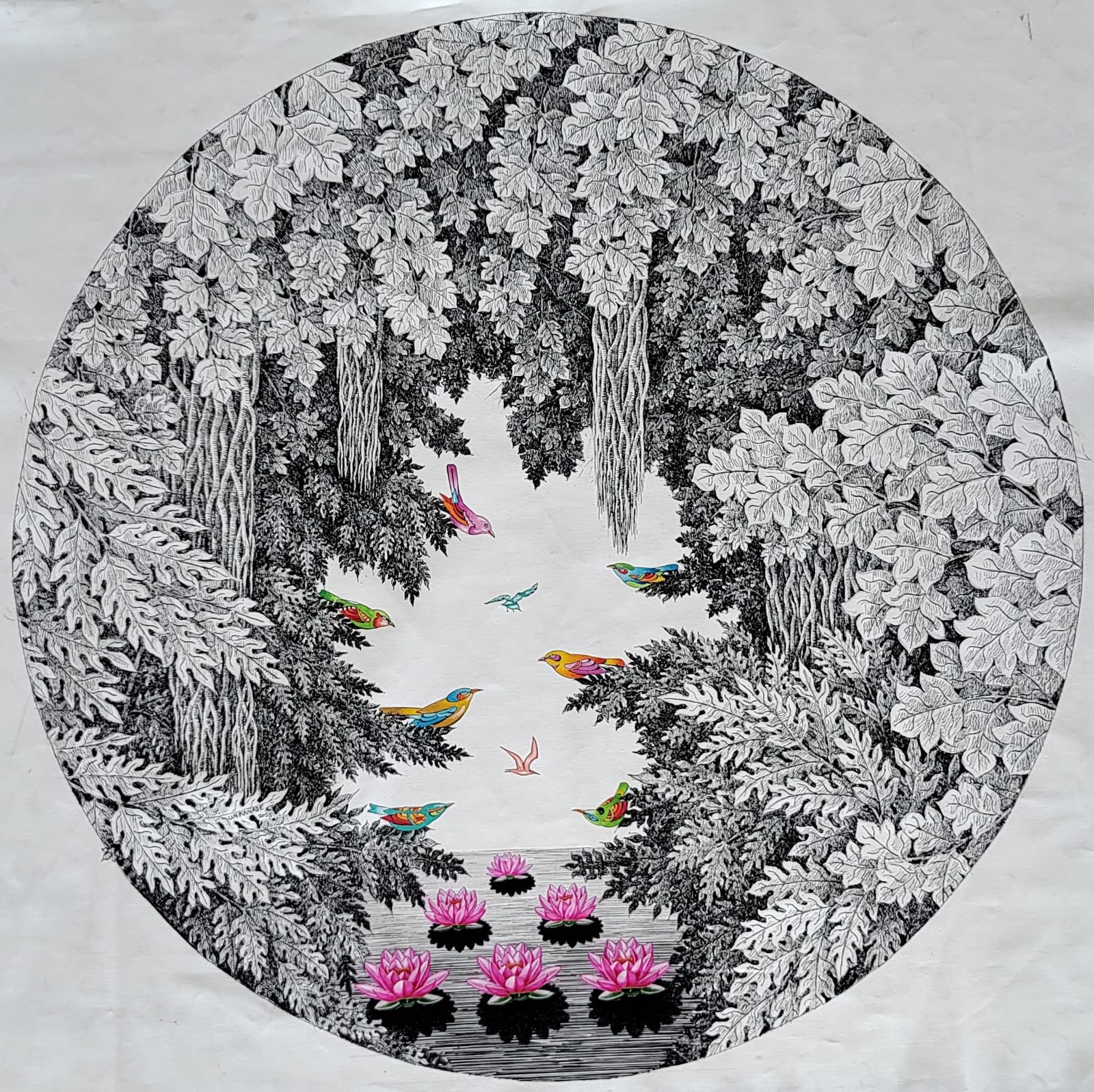
(Untitled | Umakant Kanade | 36″ diameter | Mixed media on canvas)
Here’s how art plays a powerful role in defining and strengthening a company’s brand identity:
- Reflects Company Values and Culture
Art can subtly (or boldly) reflect a brand’s values. For example:
- A tech company might display futuristic digital installations to express innovation.
- A sustainable brand may use eco-themed paintings or sculptures made from recycled materials.
- A heritage brand may showcase traditional or regional art to emphasize authenticity.
The right art collection reflects the soul of the business — what it stands for and believes in.
- Creates Memorable Customer Experiences
A striking artwork in a hotel lobby or a mural in a retail store becomes more than just décor. It becomes part of the customer experience. People remember spaces that inspire or move them. Art creates emotional connections, encourages social sharing, and increases brand recall.
- Humanizes the Workspace
Modern offices are becoming more people-centric. Incorporating art in the workplace makes environments feel more human, warm, and dynamic.
Art can:
- Boost creativity and productivity.
- Reduce stress levels.
- Encourage conversations and collaboration.
- Show that the company cares about aesthetics and employee well-being.
In short, art improves the employer brand identity, helping attract top talent and keep teams motivated.
- Sets Businesses Apart from Competitors
In a sea of sameness, corporate art gives businesses a chance to be bold and different. A creative visual identity sets you apart from your competition and makes you memorable. Brands like Airbnb, Google, and Nike invest heavily in office and digital art not just to look cool, but to define a unique brand story.
- Supports Local and Emerging Artists
Commissioning or purchasing from local artists shows that the brand supports the community. It builds goodwill and also adds authenticity to the brand story. Companies often collaborate with artists for custom brand storytelling through art, a growing trend in industries like fashion, real estate, hospitality, and tech.
Types of Corporate Art Businesses Use

(Boat with Flowers | Mahesh Singh | 24″ x 36″ | Oil on Canvas)
Here are a few examples of the types of art companies that invest in:
- Wall Murals with brand-centric themes
- Abstract Paintings for modern aesthetics
- Photography that aligns with the company’s mission or roots
- Sculptures or Installations in reception areas
- Digital Artworks in virtual meetings and brand videos
- Employee Art Galleries showcasing in-house creativity
Real-World Examples
- Google offices are filled with quirky, vibrant art that reflects innovation and fun.
- Starbucks uses local art in its cafes around the world to stay connected with community roots.
- The Ritz-Carlton hotels use curated art collections to reflect luxury and elegance.
These brands use art as a core component of their visual brand identity strategy.
Tips for Using Art in Your Business Branding
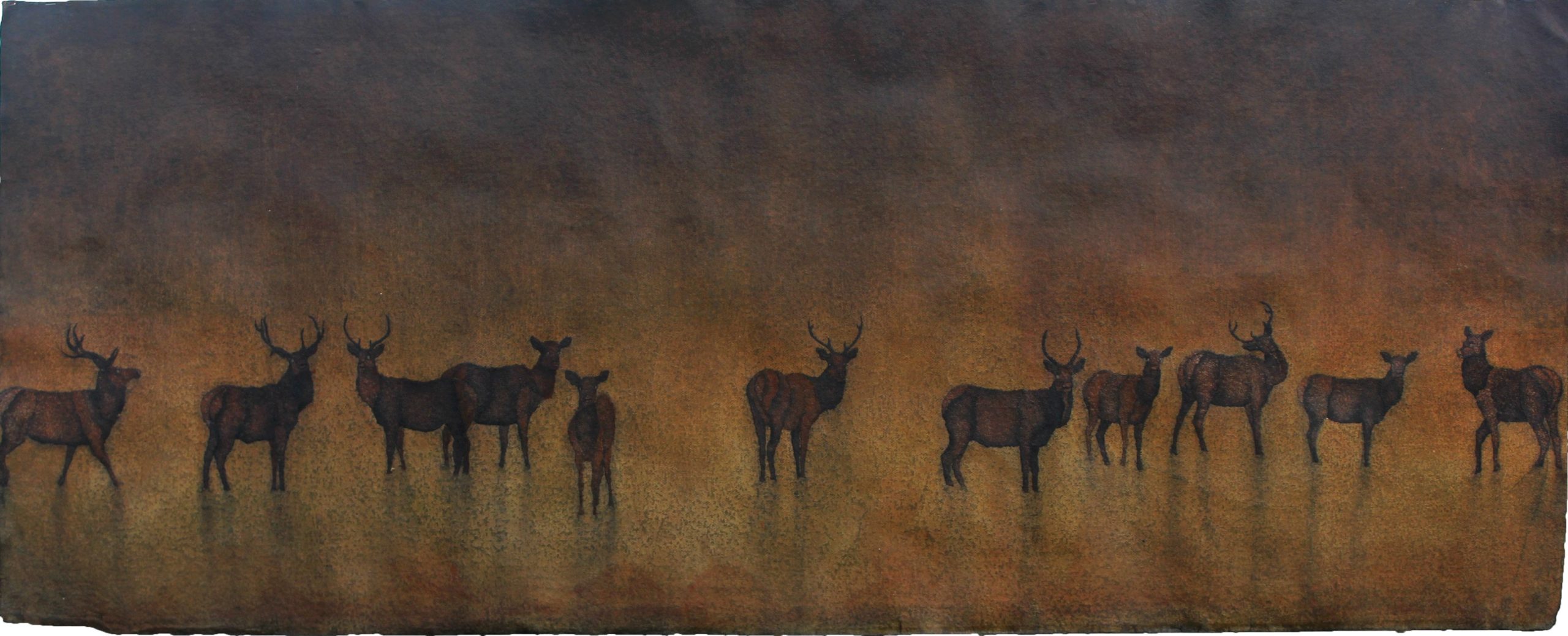
(Gathering | Magesh R | 78″ x 36″ | Ink, acrylic and silicon carbide on handmade cotton rag paper)
Want to use art to strengthen your brand identity? Here are a few tips:
- Define your brand values before selecting art. Ask: What do we want to express?
- Choose or commission artworks that align with your mission and audience.
- Work with curators or art consultants for expert guidance.
- Rotate or refresh artworks to keep the space dynamic.
Tell stories about the art and the artists behind them — on social media, websites, or events.
Conclusion
Corporate art is more than a trend — it’s a creative, impactful way for businesses to define who they are. From enhancing the brand experience to expressing core values, art helps companies connect with people on a deeper, emotional level.
If you’re building a brand that wants to be seen, felt, and remembered, consider adding art to your branding strategy. It’s not just about what your business looks like — it’s about what it feels like.





